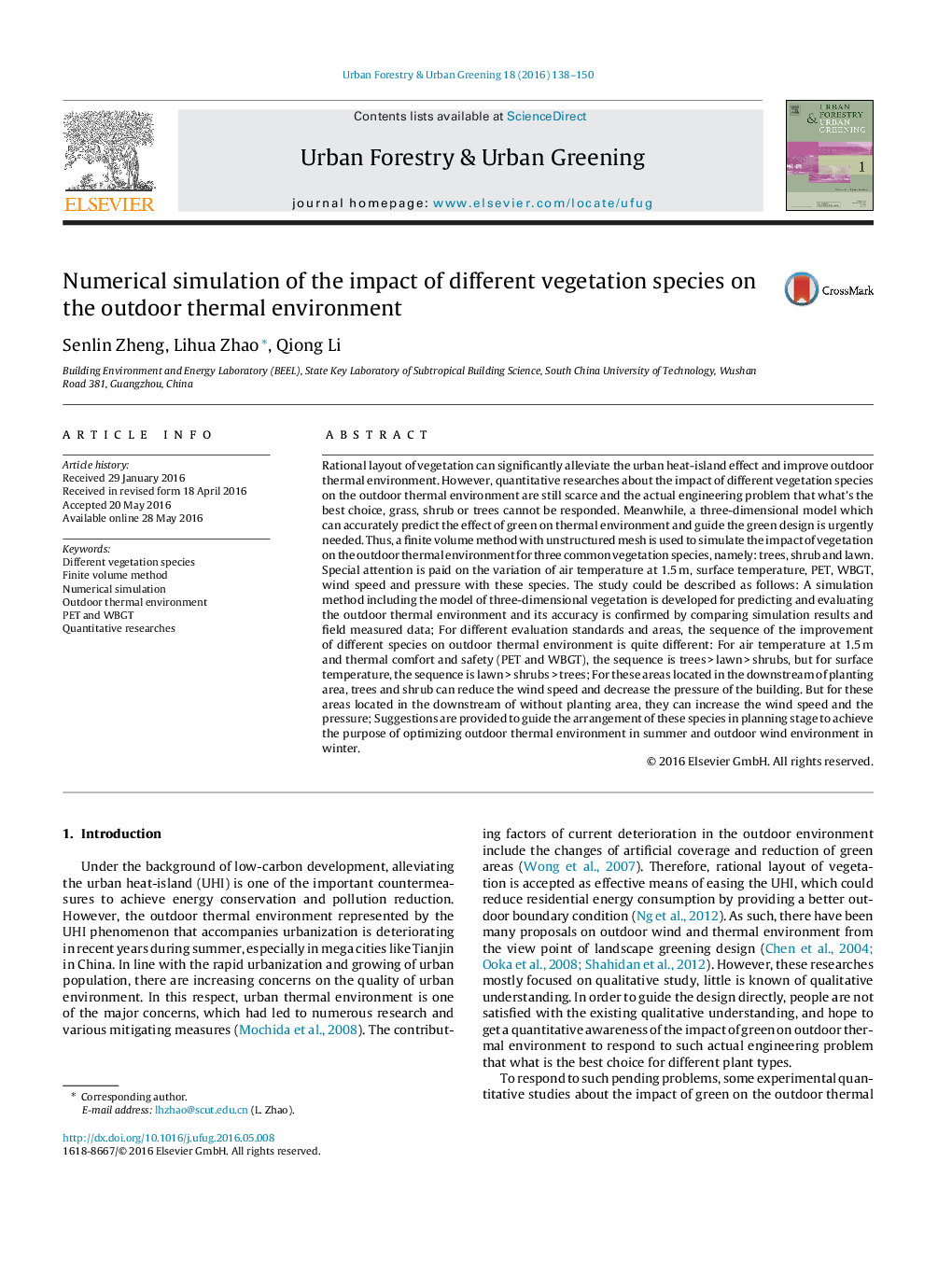| کد مقاله | کد نشریه | سال انتشار | مقاله انگلیسی | نسخه تمام متن |
|---|---|---|---|---|
| 93946 | 160239 | 2016 | 13 صفحه PDF | دانلود رایگان |
• Simulates the impact of trees, shrub and lawn on outdoor thermal environment.
• A model of three-dimensional green is developed and its accuracy is confirmed.
• For different standards and areas, the improvement of these species is different.
• For different areas, the impact of trees on wind speed and pressure is different.
• Suggestions are provided to guide the arrangement of these species in design stage.
Rational layout of vegetation can significantly alleviate the urban heat-island effect and improve outdoor thermal environment. However, quantitative researches about the impact of different vegetation species on the outdoor thermal environment are still scarce and the actual engineering problem that what’s the best choice, grass, shrub or trees cannot be responded. Meanwhile, a three-dimensional model which can accurately predict the effect of green on thermal environment and guide the green design is urgently needed. Thus, a finite volume method with unstructured mesh is used to simulate the impact of vegetation on the outdoor thermal environment for three common vegetation species, namely: trees, shrub and lawn. Special attention is paid on the variation of air temperature at 1.5 m, surface temperature, PET, WBGT, wind speed and pressure with these species. The study could be described as follows: A simulation method including the model of three-dimensional vegetation is developed for predicting and evaluating the outdoor thermal environment and its accuracy is confirmed by comparing simulation results and field measured data; For different evaluation standards and areas, the sequence of the improvement of different species on outdoor thermal environment is quite different: For air temperature at 1.5 m and thermal comfort and safety (PET and WBGT), the sequence is trees > lawn > shrubs, but for surface temperature, the sequence is lawn > shrubs > trees; For these areas located in the downstream of planting area, trees and shrub can reduce the wind speed and decrease the pressure of the building. But for these areas located in the downstream of without planting area, they can increase the wind speed and the pressure; Suggestions are provided to guide the arrangement of these species in planning stage to achieve the purpose of optimizing outdoor thermal environment in summer and outdoor wind environment in winter.
Journal: Urban Forestry & Urban Greening - Volume 18, 1 August 2016, Pages 138–150
